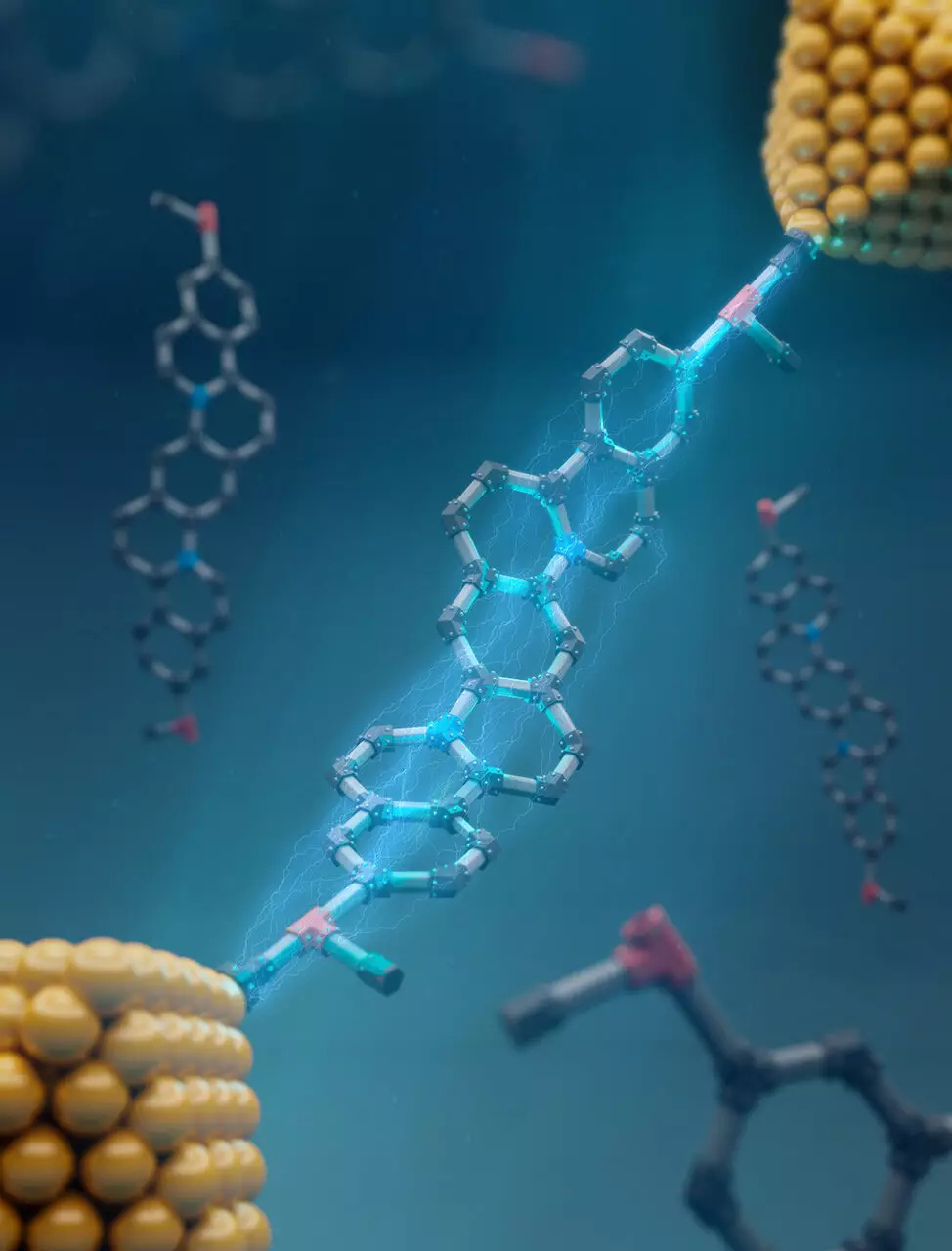As the miniaturization of electronic devices approaches physical limits, the field of electronics finds itself at a critical juncture. The phenomenon known as Moore’s law, which has successfully predicted the doubling of transistor density on silicon chips roughly every two years, may soon encounter significant challenges. Recent breakthroughs in molecular electronics, which leverage single molecules as the foundation for electronic components, promise to provide innovative solutions for achieving further reductions in device size. Researchers are exploring novel approaches to overcome the limitations of traditional materials, signaling a potential renaissance within the industry.
As we strive for smaller, more efficient electronic devices, one of the primary obstacles is the inherent size limits of silicon-based microchips. Moore’s law has served as a guiding principle for decades, but with diminishing returns in transistor scaling, the need for alternatives becomes apparent. The dynamic nature of molecular structures can affect performance consistency in these tiny components, particularly regarding electrical conductivity. Recognizing these challenges, researchers at the University of Illinois Urbana-Champaign have embarked on a pioneering investigation into the use of rigid molecular backbones.
Rigid Structures: A Game-Changer in Molecular Electronics
Central to this research is the concept of utilizing shape-persistent molecules, such as ladder-type structures, to stabilize conductance. Traditional organic molecules often exhibit flexibility and adopt multiple conformations, which can lead to substantial variability in their conductive properties. This variability, at times spanning up to a factor of 1,000, poses significant hurdles in creating consistent electronic devices. By employing rigid structures, scientists aim to mitigate these variations, thereby fostering a reliable performance across numerous molecular junctions.
The research team, led by Charles Schroeder, alongside graduate student Hao Yang and postdoctoral researcher Xiaolin Liu, highlights the importance of controlling molecular conductance in their findings. By focusing on ladder-type molecules, the researchers were able to produce consistent and robust electrical junctions, facilitating advancements towards commercializing molecular electronic devices.
A key advancement outlined in this research is the introduction of a unique one-pot synthesis method for fabricating these shape-persistent molecules. By employing a modular approach, the team successfully streamlined the process of generating chemically diverse ladder molecules without resorting to the costly starting materials typically required in conventional synthesis methods. This innovative strategy enables the production of a wider array of products suited to various electronic applications, thereby opening new pathways for exploration.
Liu’s insights into the one-pot strategy emphasize its potential to simplify molecular design while enhancing diversity in molecular electronics. Indeed, the ability to create various ladder-type molecules can play a pivotal role in developing advanced electronic devices featuring stable and uniform electrical characteristics.
Taking their research a step further, the team didn’t limit themselves to just ladder-type structures. They went on to explore the synthesis of a butterfly-like molecule to demonstrate the broader applicability of their principles. This innovative approach underscores the versatility of shape persistence in molecular design, further signifying its potential as a foundation for future functional materials. The locked backbone structure of butterfly molecules mimics the rigidity of ladder molecules, constraining motion and maintaining consistent conductive properties, essential for reliable device performance.
These new molecular structures promise to enhance the feasibility of producing numerous identical components required for next-generation electronic devices. As Yang points out, addressing the variation in conductance is critical to reducing the barriers hindering commercialization. With reliable syntheses of consistent components, the vision of effective, compact electronic devices inches closer to reality.
Looking Ahead: Implications for Market and Technology
The implications of this research stretch beyond the laboratory and hold the potential to influence both consumer electronics and industrial applications. Consistent conductance properties of molecular components can vastly improve the design and functionality of compact electronic devices, all while pushing the boundaries of what is currently achievable in terms of size and efficiency. As researchers continue to innovate and refine methods of molecular electronics, the possibility of practical applications becomes increasingly viable.
The pursuit of enhanced molecular conductance through the use of rigid, stable structures represents an exciting frontier in electronic development. By addressing the barriers related to variability and consistency, this research not only sheds light on the future of device miniaturization but establishes a framework from which the next generation of electronic components may arise. As we look towards this promising future, the question remains: how will these innovations reshape our understanding of electronics in the years to come?


Leave a Reply